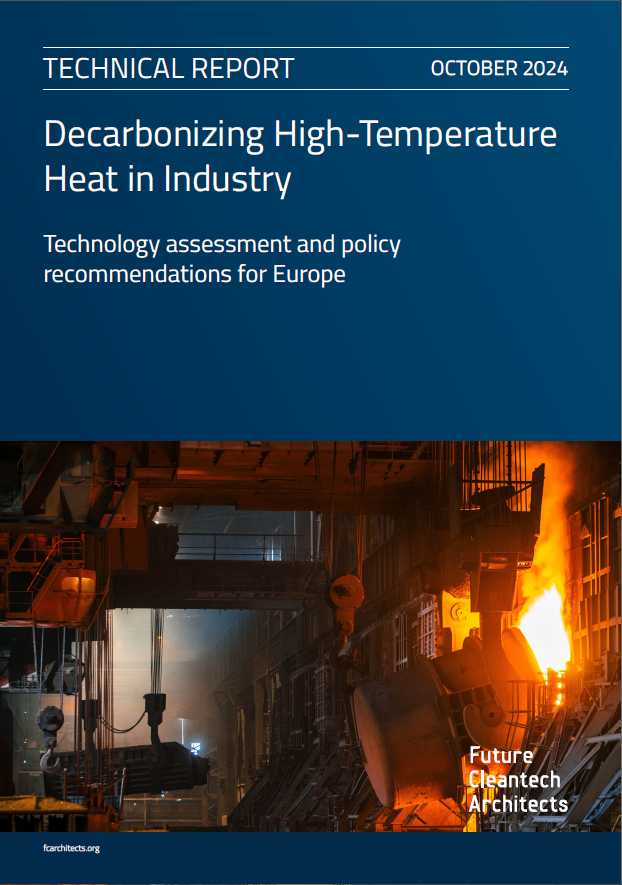Technical Report on Decarbonizing High-Temperature Heat in Industry
Future Cleantech Architects’ new technical report comprehensively compares the different technology pathways available for decarbonizing high-temperature heat processes in industry. The analysis answers key questions, including which pathways are most promising, which limitations exist today, and which systemic changes – both inside and outside industrial plants – are required for a technoeconomically successful transition to clean high-temperature heat in industry.
Executive Summary
High-temperature heat processes, such as steel forging and cement production, are vital for modern society and achieving net zero, but currently still rely on burning fossil fuels for generating high temperatures (500-2000°C). However, they can be largely electrified in the medium term, often in combination with thermal storage. Commercialization is already underway for many applications, and while significant engineering R&D and economic challenges remain when scaling up, no fundamental scientific breakthroughs are necessary to electrify these processes. In contrast, biomethane, hydrogen, and carbon capture are not a sustainable solution for HT heat processes, due largely to low availability, inefficiency, and the risk of carbon lock-in.
Availability of and operating costs for clean electricity are the main obstacles for electric heat, as electricity is currently on average 2-3 times more expensive than gas. Among the most promising solutions to this is thermal storage, which could greatly reduce electricity costs in the short to medium term. It allows for the generation of electric heat to be timed at periods of low prices independently of its use and enables operators to be compensated for grid flexibility services, while costing less than electrochemical batteries.
Nonetheless, thermal storage alone is not sufficient. Abundant, cheap, clean electricity is not only a necessity to reach net zero, it would also greatly benefit electric high-temperature heat. Expanding grid capacity and coverage increases electricity supply locally, reducing costs and enabling currently insufficiently connected plants to electrify (especially SMEs). Solar and wind power generation are cheap if their intermittency can be addressed at low cost, which again is uniquely feasible with thermal storage in the short to medium term. Moreover, it is crucial to strongly and continuously support renewable expansion by a combination of other storage technologies and the development of dispatchable clean power (e.g. advanced geothermal).
In addition to electrification, there are multiple potential options to directly generate clean heat, especially at low and medium temperatures. These options include concentrated solar, geothermal, or nuclear, and could have advantages over electric heat in the future, in particular if grid access remains a severe bottleneck for direct electrification.
Based on these considerations Future Cleantech Architects recommends the following policy priorities:
→ Support the replacement of fossil heat with electric heat and thermal storage.
→ Steer usage of scarce alternative fuels towards applications without other options. High-temperature heat could be eligible for biogas prioritization where no competitive alternatives exist yet.
→ Policy must target significantly lower electricity costs.
→ Incentivize thermal storage, including necessary changes in market regulation.
→ Deploy all available energy system tools, such as grid storage and firm and dispatchable power, to produce synergies that lower electricity costs.
→ Accelerate permitting and build more transmission lines and substations to ensure availability of electricity for all consumers.
→ Fund R&D for the engineering work required to integrate electric heat into industrial processes, whether by retrofit or new builds.
→ Fund R&D into advanced clean process heat from solar, geothermal, or nuclear sources to secure additional benefits.
